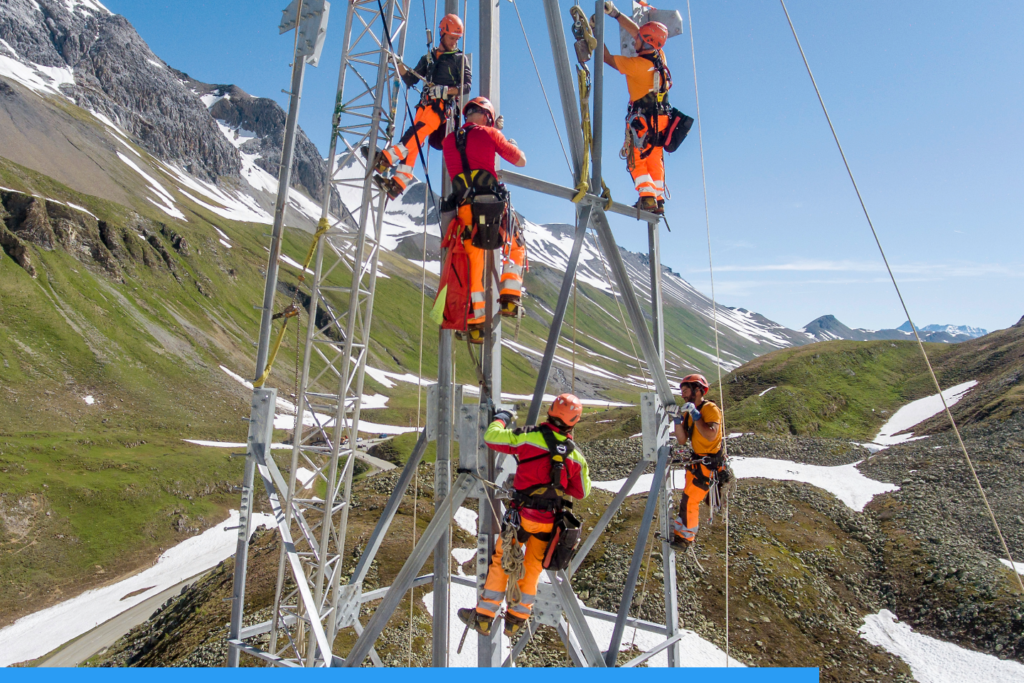Occupational health and safety
Vision and goals
Safety is a top priority for Swissgrid in all its activities. Consequently, it is managed within the company via an integral safety policy. This defines the objectives and framework for action so that safety measures are implemented in a consistent and coordinated way. The integral approach comprises seven thematic and organisational units, referred to as security domains (see chapter «Mission»): operational security, physical security, information security, integral risk management, crisis management and business continuity management, as well as environmental protection, health and safety. The aim of this last unit is to ensure the safety and health of employees, contractors, visitors and residents. In the area of health and safety, Swissgrid has set itself the key objective of reducing the number of occupational accidents with absences of more than five days to zero. This objective was achieved in 2023, as in 2022.
Swissgrid is obliged to comply with statutory and industry-standard provisions1. In specific areas, these provisions are supplemented with additional corporate standards. The following principles apply at Swissgrid when it comes to occupational health and safety:
- Regardless of the activity, the risk must be minimised as effectively as possible. Safety-conscious behaviour is therefore a basic requirement for employees. The high standard is maintained and continually improved by means of ongoing training.
- Occupational health and safety in the workplace is an important management task. By promoting the health, quality and safety awareness of the employees in the workplace, the line managers fulfil an important role model function and line responsibility.
- Swissgrid lays down occupational health and safety objectives in writing. Occupational safety inspections are carried out regularly to ensure the success of occupational health and safety measures and the fulfilment of legal requirements.
- When planning and introducing new procedures, Swissgrid is guided by the latest, advanced state of the art.
- Swissgrid structures workplace conditions in accordance with recognised health and safety principles. Special attention is paid to prevention and precaution.
Management approach
As the national grid company, Swissgrid is one of Switzerland’s critical infrastructure operators according to the Federal Office for Civil Protection and strives to implement a correspondingly high level of security. That is why Swissgrid has made Safety & Security another priority of its Strategy 2027 (see chapter «2027 Strategy»). Swissgrid’s aims to guarantee the safety of people, systems and the environment at all times.
The Executive Board delegates the management and development of integral safety management to the Chief Safety & Security Officer (CSO) and the line-independent Integral Safety Committee (ISG), which comprises representatives of the seven safety domains (see chapter «Mission»). The CSO heads the Integral Safety Committee and reports to the Executive Board on a regular basis. The Executive Board determines the framework for occupational health and safety at Swissgrid and is responsible for making sure that all employees comply with safety standards and relevant laws and regulations. All employees have a duty and obligation to apply these principles.
1Federal Act on Work in Industry, Trade and Commerce (ArG), Ordinances 1 – 5 to the Labour Act (ArGV 1 – 5), Federal Act on Accident Insurance (AIA), Ordinance on the Prevention of Accidents and Occupational Diseases (OPA), Electricity Act (EleG), Ordinance on High Voltage Systems (StV), Ordinance on the Safety and Health Protection of Workers during Construction Work (BauAV), ESTI Directive 245: Safe working on high-voltage power lines, ESTI Directive 407: Working on or in the vicinity of electrical systems.



